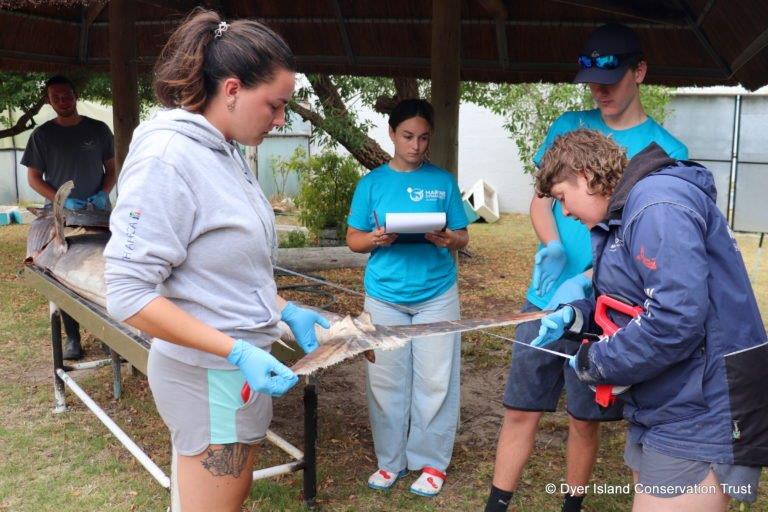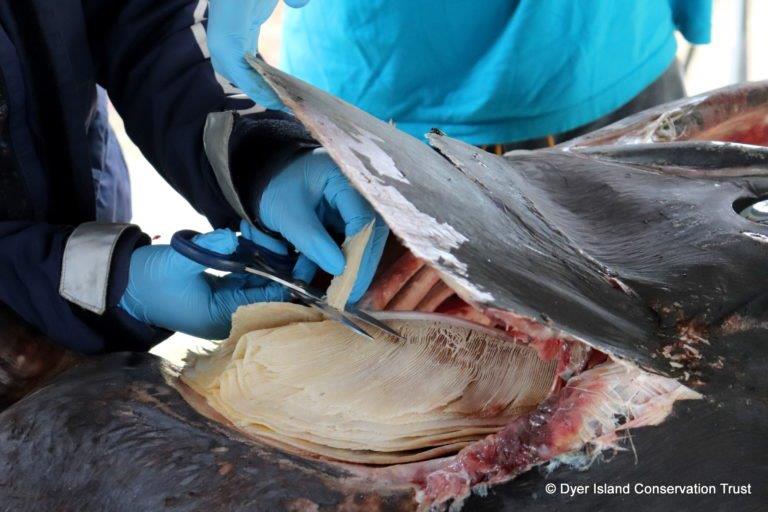Gans-Berg Newspaper - 7 November 2025 Edition
This week’s Gans-Berg Nuus is filled with community pride and inspiring local stories.


An early morning departure from Kleinbaai Harbour on 20 January 2025, with the initial goal of deploying underwater video systems, took a turn as news arrived that a large, deceased fish was found floating in Joubertsdam, brought to our attention by fisherman Johan Stoop. The team on board the research vessel Lwazi, consisting of skippers Hennie Odendaal and Dickie Chivell, marine biologist Amy Webber, guide Sonja Fleck and Marine Dynamics Academy intern and volunteer, Thomas Merdy and Anja Baumgart, swiftly made their way to where the fish was being held alongside the fishing vessel. A smooth transfer of the evident swordfish was completed, towing it back to the harbour where it was transported to the International Marine Volunteer Lodge for further analysis and dissection.
Identifying the specific species of swordfish was completed before measurements and dissection, led by Amy Webber, with the assistance of Sonja Fleck in the presence of Marine Dynamics Academy interns and volunteers. The rigid pectoral fins and grooves of the lower jaw were some of the main indicators that the fish being studied was a Black marlin (Istiompax indica).
After all required measurements were taken, the necropsy began for internal inspection of the individual to investigate as to whether there were any clues of the death. All organs were intact, with no surface signs of predation. The stomach contents showed full digestion, with no indication as to what the last meal may have been. Within the bay, warmer waters ranging from 20-24°C through the month of December could be a possible reason as to why the black marlin was found within Atlantic waters. No clear signs of internal stress were found. The continued inspection of the internal organs confirmed the black marlin to be a mature female, with the ovaries sighted within the body cavity. Samples of the gill filaments, pectoral fin and gonads were collected and stored to aid further investigation into the biology of billfish.
To demonstrate the complexity of the black marlin biology, the eye was removed. Marlin species have impeccable eyesight, relying largely on vision to identify their prey species. A unique adaptation that increases predation efficiency is the close alignment to the muscular structure that allows heat transfer via a counter current exchange of the large blood vessel leading to the back of the eye. Increased temperature allows the fish to view more 'frames per second', an advantageous feature when swimming at high speeds. Sincere appreciation to Johan Stoop and his team for allowing to the DICT and Marine Dynamics Academy staff to explore this unique and rare scientific practice.
(Article shortened: Information and pictures provided by the International Marine Volunteer Lodge, Mariene Dynamics: dict.org.za/blog/)
Hardus Botha

Gans-Berg Nuus / News is a weekly bilingual community newspaper serving Gansbaai and the surrounding Overstrand areas. Alternating between Afrikaans and English on the front page, it provides current local news, municipal updates, business advertising, and general items of interest. Businesses and p...
View ProfileXplorio is your local connection allowing you to find anything and everything about a town.
Read MoreThis week’s Gans-Berg Nuus is filled with community pride and inspiring local stories.
From festive season preparations and heroic fire-fighting efforts to local school triumphs...
Die tema, “Boererate en resepte van toeka tot nou”, het baie interessante resepte...
Colleen Knox was a lovely lady who I met at Lighthouse Tavern restaurant which I had purchased in 2008.
Die op-en-wakker Bietoubos Damesklub het hulle Vrouemaand-byeenkoms met 'n belangrike eienskap van vrouwees behoorlik gevier - 'omgee'.
Grade 6 learner at Gansbaai Primary School when he took part in the filming of Nêrens, Noord-Kaap, a family drama series on kykNET...